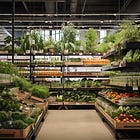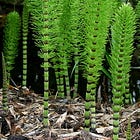Food Forests on a Budget, part 4
Recycling and reusing brings a sense of satisfaction and self-sufficiency that is hard to beat!
For your convenience, an index for this series.
So far in this “Food Forests on a Budget” series, we’ve been focusing on or around sourcing plants for your food garden, either for free or on a tight budget. We’ve talked about the ethical implications of the various techniques.
Of course, a food forest is not just plants floating in a vacuum. I’ll assume in this post that you have a small plot of land to work on (mine is less than one hundred square metres - my back garden, in fact).
We can cut to the chase right now. All my suggestions can be boiled down to observation, patience and creativity. In fact, these three things are key to the whole budget food forest series. I’ll demonstrate with a few examples from my small food forest adventure (including mistakes and regrets) to help you on your own journey.
Paths
There’s nothing that quite beats the feeling of your first harvest from your burgeoning food forest. I was quite emotional when I picked the first ripening wild strawberry in my first year. And to harvest effectively, we need an effective path network. There’s many ways to make a forest path. Some suggest a mown-grass path, others, a wood chip passage. For myself, I looked around my garden because I didn’t want to spend any money. I asked myself what I had on hand. When I first moved in to this property, the apple tree was suffocated surrounded by a series of small paving slabs with grid-like indentations. I brought up these paving slabs during the pandemic lock down in the UK which talked in more detail about this in my second ever substack post.
I stacked these slabs by the side of the house, deferring the disposal of them, but it turns out that my laziness was a blessing in disguise. Snapping these pavers into quarters made for a nice little path around the apple tree.

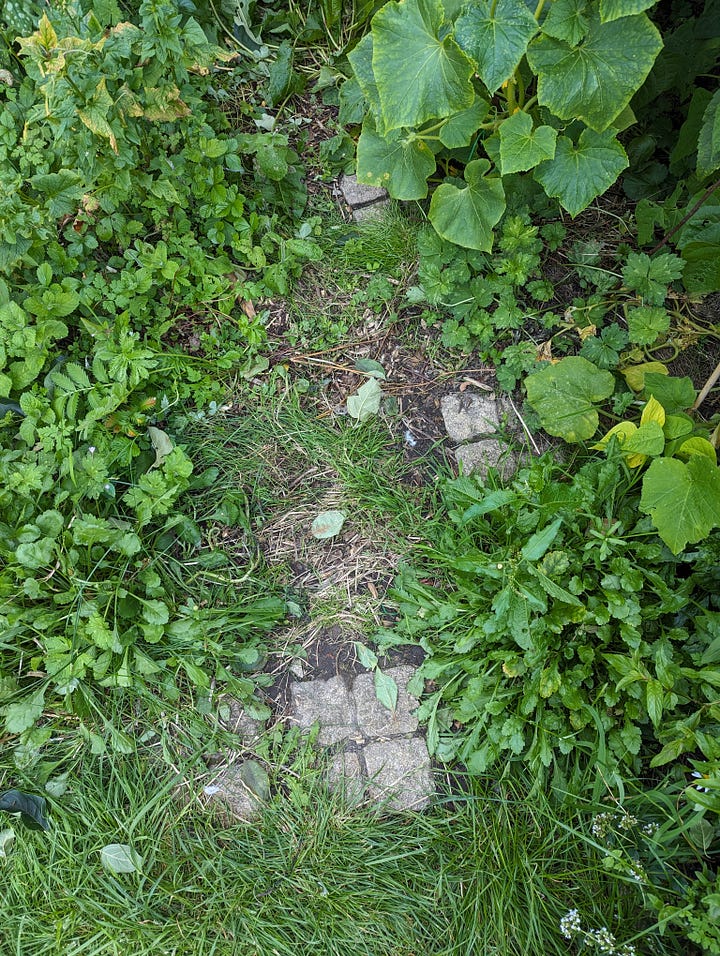
Just have a look around. My house is about 70 years old, digging around sometimes unearths some old bricks that can be recycled. Hidden behind the shed, I found some lovely aged rectangular slabs. These found a second life as the main path past the apple tree and up into elevated back of the garden.
Building this type of path really doesn’t take much work. There’s either a thin layer of gravel (yet more recycled material) separating the soil from the slabs, or just plain mud. They might settle in time, but they’ve coped so far in terribly wet and rainy conditions.
A variation on this theme is using old bricks. If you slice out a path through lawn (or soil) with a saw or something similar, you can lay a rustic/rough-and-ready brick path. I did this because the grass gets completely saturated in the autumn and winter.

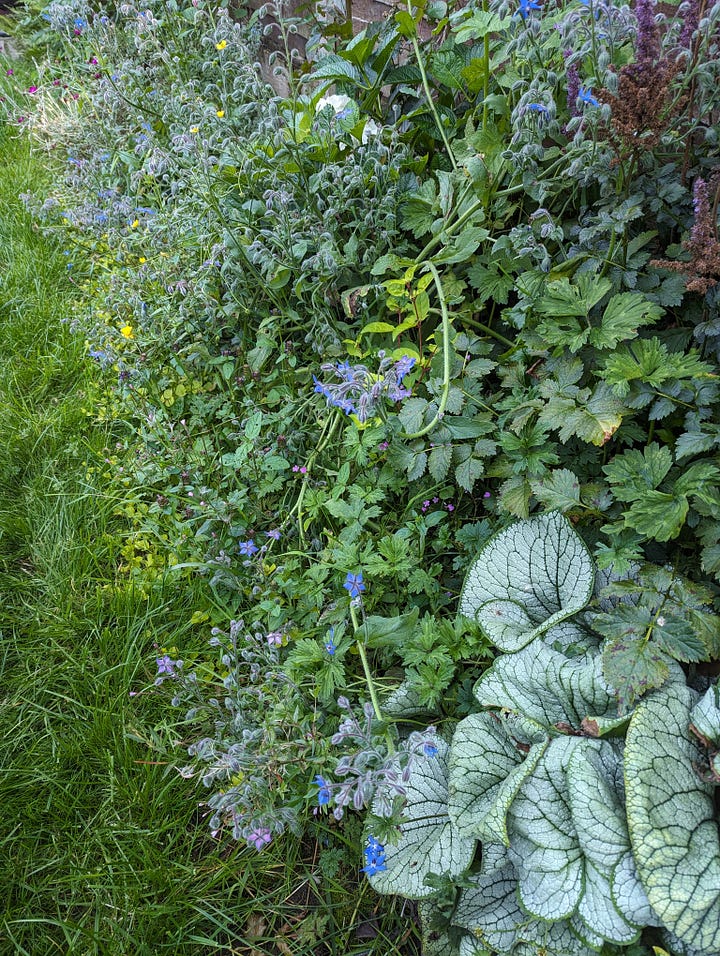
These bricks were rescued from a skip, very similar to what Americans call a dumpster.
Raised Beds
Raised beds are another great example of stretching your ingenuity. If you’ve been paying attention to social media, there’s plenty of examples of expensive raised beds; hard wood, aluminium, willow wattle and more. Use what you have around! For myself, I had some old brick edge pieces, those paving slabs from around the apple tree and an old shower screen.

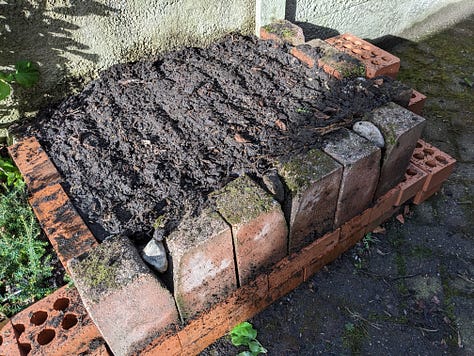
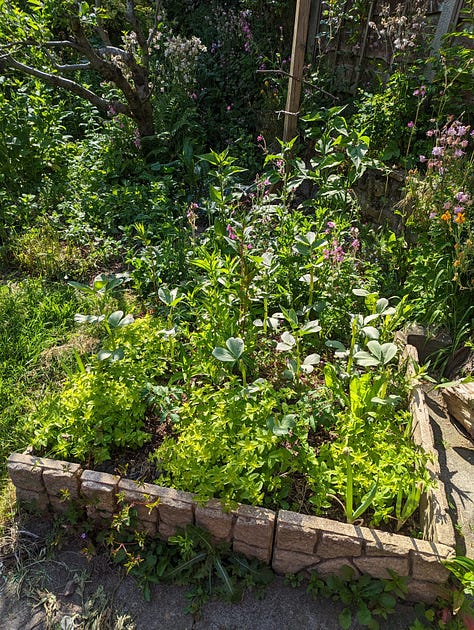
If there’s truly nothing you can use as a raised bed (and you’ve established you really want one), then here in the UK bricks are some of the cheapest material for that purpose. You can see that I’ve not used any cement; the weight of bricks will suffice for up to three or four layers.
Mulch
Mulch is an interesting one. Forest gardeners are generally pro-mulch. It has all sorts of beneficial effects and it’s not just a fringe belief. You’ll read a lot about “chip drops” where a tree surgeon will dump off tonnes of chipped wood for free. This can happen, and good for you if it does, but if you struggle finding someone reliable or live in a place where wood is just too valuable to give away, you’ll benefit from generating as much of your own mulch as possible. Two solutions for your suburban food forester include growing “living” mulch - plants that spread across your soil - and grass clippings. Examples of living mulch include Apple mint and moneywort. I think I’ll devote a whole article to it, but suffice to say, try very hard not to buy in your mulch.
You can read about this mulching misadventure (tangentially) in my post about horsetail fern.
Closing Thoughts
As I said at the beginning, this whole article is about observation and creativity. Sure, it is easier to buy in the materials and plants that you need, but recycling and reusing brings a sense of satisfaction and self-sufficiency that is hard to beat!
Until next time.




